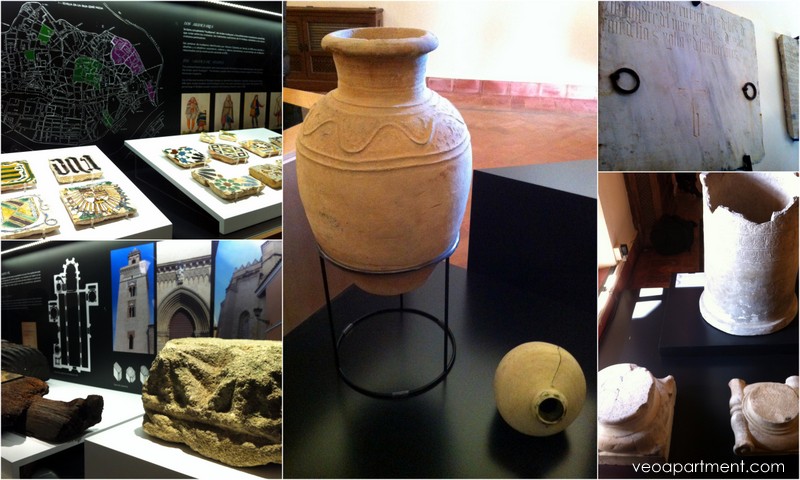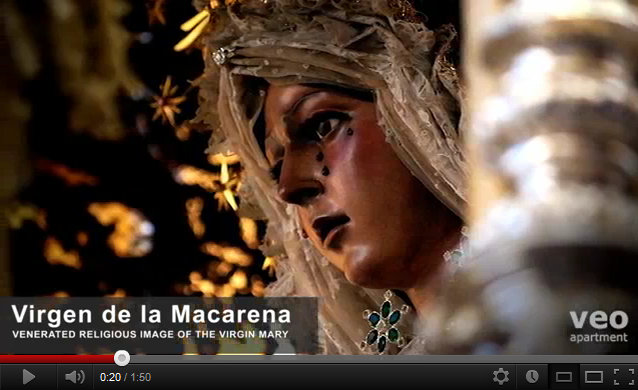No, we’re not talking about the 1990s dance craze (though there’s a loose connection), or about the football stadium in Rio de Janeiro (it’s not even spelt that way). We’re talking about the neighbourhood of La Macarena that forms the northeast quarter of the historic centre of Seville in Spain. A largely residential area away from the main monuments – the Cathedral and Alcázar Palace – and its more touristy neighbour the Santa Cruz, the Macarena’s working class roots (it is said to have once been the poorest slum in Spain) give it an authentic local atmosphere with plenty to see and do.
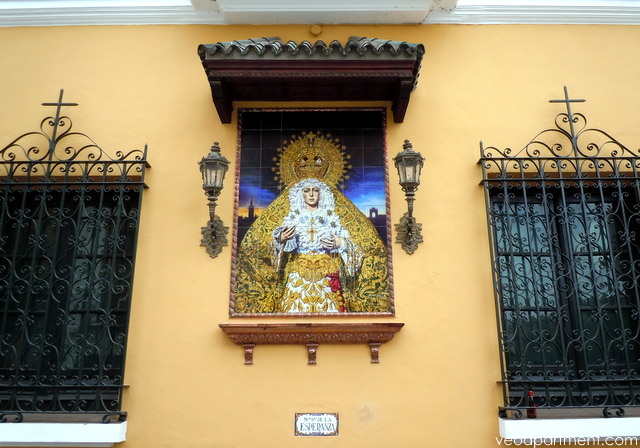 La Virgen de la Esperanza de la Macarena
La Virgen de la Esperanza de la Macarena
The name itself is thought to come either from Macarius, a wealthy Roman said to have owned a lot of land in the area, or more probably from Bab-al-Makrin, the Moorish name for the Macarena city gate that still stands at the northern end of San Luis street, next to the longest surviving section of the mediaeval city wall that was built to enclose the new northern extension of the city in the 11th century.
The Macarena’s greatest claim to fame is probably the statue of La Virgen de la Esperanza de la Macarena, the Virgin of Hope, the most popular of the statues of the Virgin that take part in the city’s Semana Santa (Holy Week) processions. She was created in the late 17th century, probably by the famous sculptor Pedro Roldán and/or his daughter Luisa, and is the patroness of bullfighters. Even today, her appearance in the pre-dawn hours of Good Friday draws huge crowds onto the streets. She can normally be seen in the Basilica of Macarena, beside the city gate.
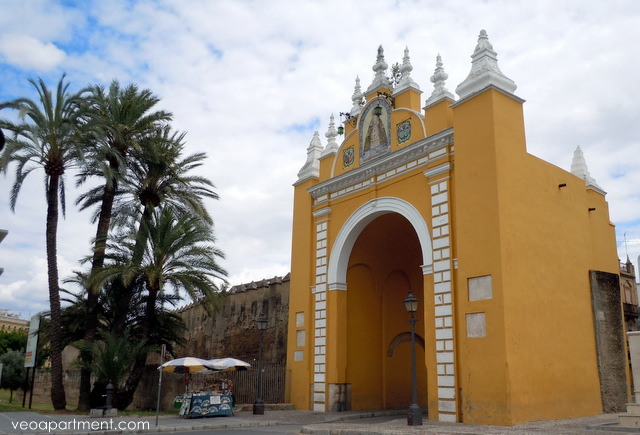 the Macarena Gate
the Macarena Gate
La Macarena is also home to the city’s oldest provisions market, on Calle Feria, and to the oldest street market in Europe, El Jueves, the Thursday market. This antiques/second-hand/bric-a-brac market got its charter in the 13th century, and is still a fun place to come and look for a bargain, or just to feel the vibe. The provisions market, mentioned by Cervantes, moved off the street into its current quarters next to the Omnium Sanctorum church in the 18th century. Come here for all that fresh fish and fruit and veg, and the little bars around the outside, especially La Cantina, which serves the freshest seafood tapas in Seville. Behind the market, in the Palacio Algaba, you can also find Seville’s Mudejar Centre, a small museum that celebrates the culture and achievements of the city’s Moorish period. Worth a visit to find out how the past has influenced the present.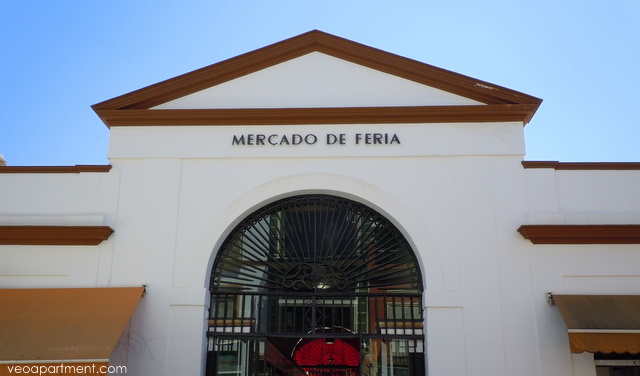 entrance to the Feria Market
entrance to the Feria Market
One of my favourite things to so, here as in other parts of Seville, is just to wander around the neighbourhood streets, and see what you stumble across. For me, surprise treats have included some of the artesan workshops, particularly Rompemoldes, the old San Luis church, the Garden of the Moorish king, and the faded splendour of the Pumarejo Palace. Rent one of our apartments in the neighbourhood as abase and just go exploring this whole other Seville.
